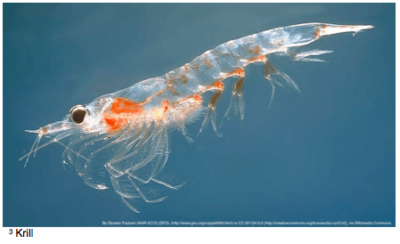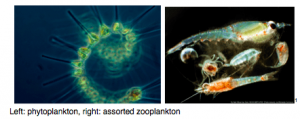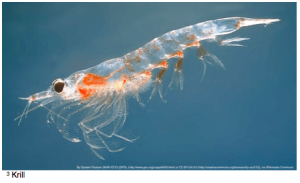
The ocean is vast! It covers 70% of the Earth and is home to the largest animal ever to have lived on our planet- the blue whale. It’s easy to get caught up in the majesty of the ocean’s magnitude, but have you ever thought about what you can find in just a single drop of seawater?
 Let’s zoom in and take a look! Left: phytoplankton, right: assorted zooplankton There’s a whole other world living on this microscopic level! When you go for a swim in the ocean, these little guys are floating all around you. According to the Australian Department of Environment and Energy, a single liter of ocean water contains around a million phytoplankton, half a million zooplankton, a billion bacteria and four billion viruses! Never heard of phytoplankton or zooplankton? Let’s learn a bit more about them and why they are so important.
Let’s zoom in and take a look! Left: phytoplankton, right: assorted zooplankton There’s a whole other world living on this microscopic level! When you go for a swim in the ocean, these little guys are floating all around you. According to the Australian Department of Environment and Energy, a single liter of ocean water contains around a million phytoplankton, half a million zooplankton, a billion bacteria and four billion viruses! Never heard of phytoplankton or zooplankton? Let’s learn a bit more about them and why they are so important.
 PHYTOPLANKTON:
PHYTOPLANKTON:
Assorted diatoms Phytoplankton are the basis of the oceanic food web. They are tiny, planktonic (free drifting) organisms that use photosynthesis to convert sunlight into energy. They contribute over half of the world’s oxygen through photosynthesis! Pollution (pesticides, oil, heavy metals, etc.) can be extremely harmful to phytoplankton- and when they take a hit from our harmful waste- entire oceanic communities are damaged.
 ZOOPLANKTON:
ZOOPLANKTON:
Krill Microscopic zooplankton are actually miniscule animals. Some zooplankton will grow out of this planktonic stage of life, but others will always remain tiny drifters. Zooplankton feed on phytoplankton, bacteria and other zooplankton. Although zooplankton are small, some of the ocean’s biggest animals dine on them. Remember the blue whale- the largest animal to have ever lived on planet Earth? They subsist entirely on zooplankton (mainly krill and copepods- the zooplankton that the character Plankton from Spongebob was based off of). Want another reason to marvel at these critters? Many of these organisms, namely a group of phytoplankton called dinoflagellates, are bioluminescent, which means they can produce their own light and glow in the dark! Dinoflagellate bioluminescence Keep microscopic, oceanic plankton happy by keeping our oceans clean! And don’t forget about the millions of organisms floating around you next time you take a swim!
Check out these links if you want to learn more:
Bioluminescence:
TedEd plankton video: https://www.youtube.com/watch?v=xFQ_fO2D7f0
Harmful algal blooms: https://oceanservice.noaa.gov/facts/why_habs.html
Written By: Talia Niederman



